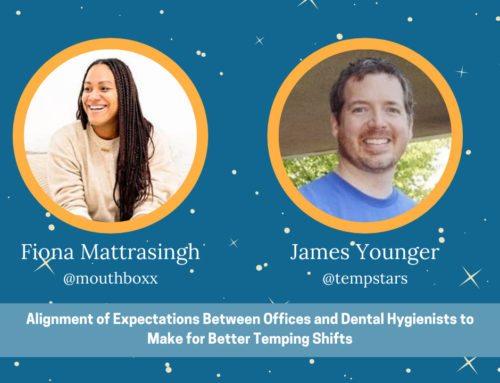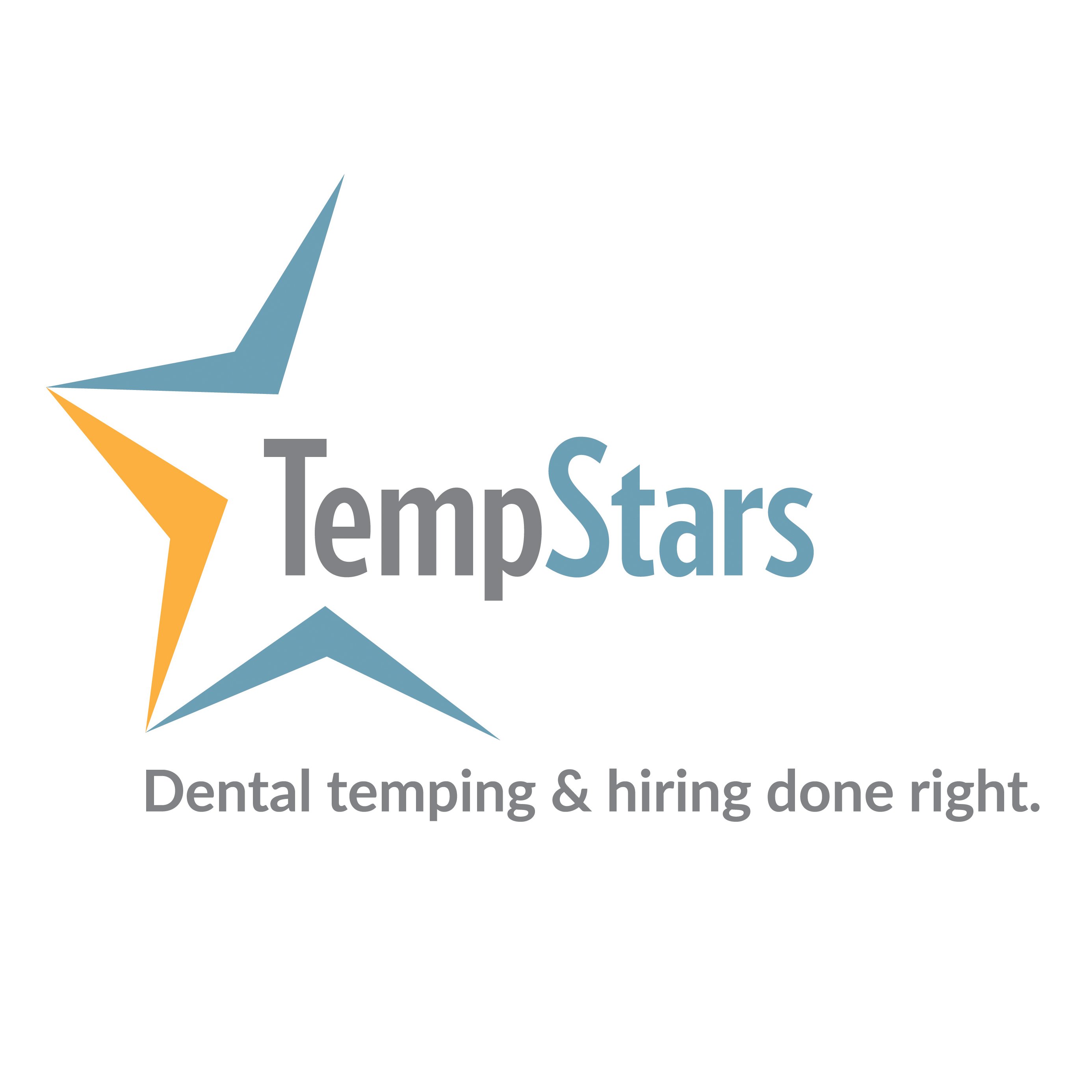At TempStars, we want everyone to be happier at work. So we partnered with the Canada’s #1 resume coach, DocDoctor.ca, to bring you the advice you need to get your resume shining and find that dream job you’re looking for!
Even exceptionally great professionals including dental hygienists, assistants, and receptionists sometimes struggle with resume writing. Well – we’re here to help you figure it out! Over the coming weeks, we’ll share some great advice from their team of experts so that you can get your resume in tip-top shape. Whether you’re applying for a full-time position on our Job Board or for a temping shift, having a resume that stands out will help you get noticed and hired!
A Competitive Industry
As a dental professional, you have chosen a fulfilling line of work that is constantly evolving. Dentistry has made rapid strides in technology and innovations over the years, fully engrossing you in the process. While being a dental professional is an exciting career, it can also be highly competitive. In some saturated job markets, employers receive anywhere around 250 resumes every day for every open position available.
If you have come across an opening for a permanent or temporary position that you are interested in, there’s a chance you’re up for some tough competition. While most dental offices review resumes manually, some larger dental organizations make use of applicant tracking systems to screen and shortlist interesting resumes and portfolios. If you are one of the lucky few who has passes the resume “bots”, your resume will still have to impress the dentist owner or hiring manager.
Where To Start?
From what DocDoctor.ca has identified, attention to detail is often neglected in resumes of many great professionals. Unaligned columns, resumes littered with typos, poor font choice, and awkward spillage of the text into columns are just some of the common mistakes people make when they craft their resume. Below we have compiled a list of missteps a dental professional should be mindful of when composing their curriculum vitae. These may be divided into two categories – style and content.
Style Mistakes & How to Fix Them
While graphics and fancy styles aren’t as important as the content of your resume, it cannot be completely neglected! Your resume is a direct reflection of you to the person hiring you. A simple yet elegant and polished resume is the reader’s first clue that you are a serious and professional candidate.
And we do find that – for temping shifts, style ends up counting more than content. Because it’s typically a short-term thing, dentists and hiring managers use the style of your resume as an indicator of your professionalism when temping. On the other hand, for permanent and contract positions, they’ll certainly dive deeper into the content.
A good strategy is to have a short, stylized resume for your temping profile, and a longer more detailed one when applying for permanent/contract positions.
And remember – in all cases, good style helps readability, which is critical for a hiring manager who is wading through piles of resumes.
Here are some common style mistakes to avoid…
- Choosing a boring font: Some default fonts like Arial may be tolerable and better than snazzier fonts. However, you should know that there are some absolute worst fonts (Comic sans, anyone?) to use when writing a resume. Instead of using Times New Roman, why not switch to Garamond which offers a similar but timeless serif typeface. Find a font that is simple, professional, and does not sacrifice readability if you have to condense your resume in one or two pages.
- Not using bold, italic, or underlined text: Using formatted text can help the recruiter cruise through your resume easier. For example, using bold for work position titles help highlight the important aspects of your resume while guiding their eyes through the page.
- Improper text alignment: This may be the most common mistake done by many while using editing programs for their resumes. Do not use spaces to align text. They never align text properly and it makes it hard to make changes. Learn to use tables, margins, and columns to align text properly!
- Spacing inconsistently: By default, Word adds adequate space before and after bulleted or number lists and between paragraphs of the same style. You can make changes to these paragraph settings to formulate a consistent writing pattern while also avoiding extra spacing as it may make your resume look sparse. This is also a good tip if you are trying to keep your resume to one page.
- Not using bullets: Your resume should be easy to read and easily graspable. If the recruiter has to crease their forehead and get a pair of reading glasses to help distinguish points and paragraphs, your resume is flawed. Use bullet points to draw the reader’s attention and fit every point in a single line.
- Using awkward categories: Your resume should only include sections from the following list: Experience, Achievements, Awards, Community Involvement, Professional Skills, Certifications, and Education. You also don’t need to use every category if it’s not relevant. Merge categories together if needed and learn the correct sequence to put them in. For example, if you’re fresh out of school – put your education first. If you’re a veteran, list your work experience first.
- Adding a profile picture: There is usually no need to add your photo to your resume. If your employer is concerned with what you look like for some reason, they may be able to find you easily on Facebook and LinkedIn. But for the most part, they shouldn’t care!
- Making it too long or too short: The ideal length of a resume is one or two pages at most. Your resume should include all necessary information within these two pages. Avoid fluffing your pieces and keep them as crisp as you can. On the other hand, do not keep them too short. Remember to fill gaps in your work history or to account for them if possible. A long gap between jobs may disinterest your hiring manager.
- Going way back: Try to keep your work experience to the last decade. If you did something credible that may be worth mentioning but is outside of the timeframe, it is okay to include it – just use your discretion.
- Cramming text: Wall-to-wall text on your resume can quickly disinterest the reader. Use white space wisely to separate your resume into visually logical sections.
- Sending in Word format: Always, always, always submit resumes as PDF format. In Word format (doc/docx), your resume will hardly look the same in the recruiter’s computer as it does on yours as Microsoft Word renders the document differently on every platform. Use Word’s “Save as type: PDF” option or use a PDF printing program to generate a stable document.
Content Mistakes & How to Fix Them
A dentist or hiring manager will likely have a heap of resumes to go through and assess. With their inboxes getting bombarded with applications, most employers only skim through your resume before they decide on putting you either on the ‘maybe’ pile or the ‘no’ trash chute. In order for your dental profile to stand the test of the 6-second screening, you should remember to include only important data and not information that can be distracting or repelling.
- Including an objective: Avoid adding an objective as it may overthrow the purpose of your whole resume. A short personal power statement by articulating character traits can help add value, but do not ramble on about what job you’re looking for.
- Listing content in the wrong order: Put the most recent activities (schooling, community work) first and then proceed in reverse chronological order, ending with your oldest gig. The recruiter wants content that is straightforward and to the point and will not have the time to scan through for your latest work.
- Ignoring job requirements: Before writing and sending in your resume, familiarize yourself with the company, its values, and the company culture. Take a look at what they look for and emphasize the relevant qualifications you have. Do you want to work in that particular dental office that just put up an opening? Then research on that office.
- Omitting contact information: If you want the dental office to directly contact you, make it easier for them. Add your full address, email address, and phone number at a prominent, easily visible place in your resume (usually right below your name at the tip). Also, there is no need to add “Address”, “Phone” or “Email” before each item. They are self-explanatory.
- Using a “cute” address: Avoid using funny, cringy, or cute email addresses. It is best to grab an email address that has your first and last name, or your first initial and last name. As much as possible, avoid using numbers, adjectives, verbs, adverbs, or other parts of speech such as christina33, toothlover77, etc. That means toothlover77@domain.com you are out!
- Including personal details: A hiring manager does not care about your personal details like birthday, age, or marital status. In fact, it would be illegal for them to ask you such details. So, do not include these.
- Using personal pronouns: Avoid using personal pronouns like “I”, “me”, “he”, “she”, “him”, or “her” in your resume when talking about yourself.
- Using catchphrases: Cliché descriptors and catchphrases like “able to think outside the box” or “people pleaser” should be rephrased using string verbs.
- Using a dated email domain: If you are still using older email domains that are no longer relevant like Yahoo or Hotmail, it might not resonate with your hiring manager and deter them from making advances at contacting you. You should go with popular email domains like Google, Outlook, or a private or academic domain.
- Highlighting duties instead of achievements: Emphasize what you actually did rather than what you are willing to do for the new company. If you are a dental receptionist, instead of noting down what your new job description and responsibilities would be like, write on what you have done in the past.
- Being too modest: This is a good time for you to brag a little. Don’t go overboard but you should proudly list all your achievements and qualities that would interest your recruiter into hiring you. Be confident.
- Using inconsistent punctuation: Full sentences should always end with periods. So should all bullet point sentences.
- Not checking for typos: Thoroughly skim your resume for grammatical and spelling errors. Even documents that pass in Word spell check may have some errors that will require you to look over them carefully.
- Listing references: You should never add references on your resume. They waste space and you will be asked for them later. Instead, prepare a separate annex document or sheet that lists your references and their contact information.
- Omitting a cover letter: Compose a professional letter to attach to your CV. You can make a template and modify the key paragraphs for subsequent applications.
It’s a competitive industry out there, but we believe you have what it takes to succeed! Especially if you’re our there at the top of your game with professionalism, reliability and beinga great team member – we want you to have the best chance of landing that dream job. You deserve it! So take these tips, sit down with your resume for some much-needed updates and stand out when applying for your next TempStars temping shift or Job Board position.
DocDoctor.ca
As we mentioned, we’ve teamed up with DocDoctor.ca‘s professional resume writers to provide you with these tips. Based out of Ottawa, this awesome team works hard to help all sorts of clients improve their resumes (dental included)! If implementing all of these tips still didn’t make you feel confident that your resume is ready – get in touch with DocDoctor.ca who can help you out.














